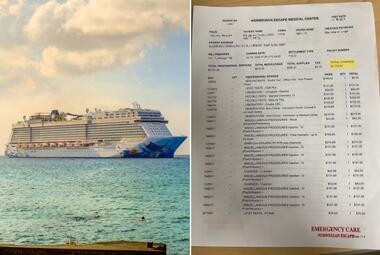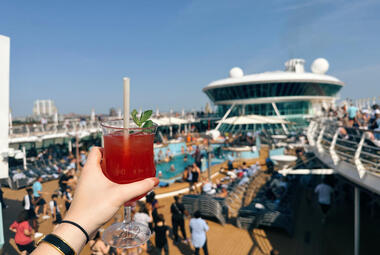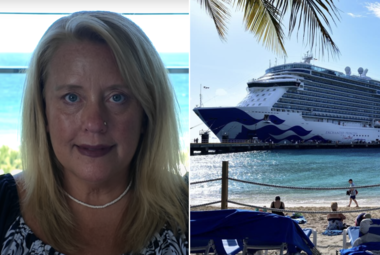Did you know there are certain items allowed in your checked baggage for air travel that are prohibited on cruise ships? While you may not encounter issues in the airport, cruise lines have a longer list of banned items due to safety and environmental concerns.
Nobody wants to be embarrassingly pulled aside during the physical check-in process because they're trying to smuggle something onboard—even worse, something they didn't know was prohibited!
When preparing for your next cruise avoid packing these 8 items allowed on planes but not cruise ships.
Read more: Cruise packing list: Essentials to bring on a cruise
Hard liquor
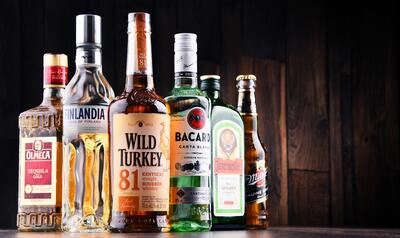
If you're in Mexico and stop by a tequila factory, don't hesitate to buy some local liquor to take home as a souvenir. While you cannot bring spirits onboard, the TSA doesn't prohibit passengers from flying with alcohol. If you purchase alcohol during your sailing, it will be kept by the cruise line until the end of the sailing, either the night before or the day of disembarkation.
If the alcohol content is more than 24% but less than 70%, you're limited to 5 liters (1.3 gallons) per passenger on planes. All bottles must also be in unopened retail packaging. Alcoholic beverages with an alcohol content of 24% or less don't have any limitations in checked bags. Guests planning to pack a carry-on may only bring bottles 3.4oz or less.
Passengers who arrive at the cruise terminal on embarkation day will have all alcohol—aside from the permitted onboard allowance—confiscated. For a Royal Caribbean or Carnival cruise, guests are limited to just one 750ml bottle of wine or champagne. Beer and liquor will be seized, and you won't be entitled to a refund.
Read more: TikTok is full of hacks showing how to sneak alcohol on a cruise
Steamers

Whether you're packing for a weekend getaway or a 7-night cruise, many travelers aim to pack in a way that reduces wrinkles. While steamers smooth out pesky creases and folds, they aren't allowed on cruise ships, though TSA permits portable steamers.
They're banned because they are considered fire hazards, and if you're caught with one in your carry-on or checked bag at the cruise terminal, it will be taken; however, you can pick it up in the terminal on disembarkation day.
In addition to steamers, Carnival Cruise Line states all electrical and household appliances that contain any kind of heating element are banned from their ships, including heating blankets, water heaters, hot plates, coffee machines, toasters, humidifiers, and immersion heaters.
Read more: Cruisers claim they were "degraded" for sneaking a washing machine onboard a Carnival ship
Irons
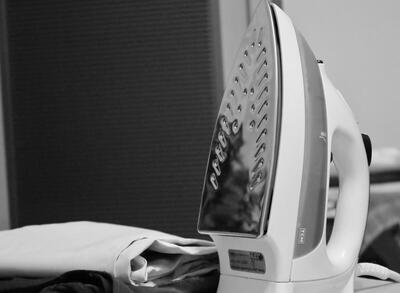
Like steamers, cruise lines prohibit passengers from bringing irons onboard. You won't find an iron (or steamer) provided in your cabin, either. Fear not, though—you do not have to accept a wrinkled fate!
For less than $10, you can purchase wrinkle-release spray, which offers a convenient (and cruise line-approved) solution to keeping your clothing looking neat throughout your voyage. Typically, I'll spray an article of clothing and hang it in the bathroom while I shower, so the steam produced by the hot water can help smooth out any wrinkles.
Alternatively, you can utilize the laundry facilities on your ship, which range from self-service laundromats to pricey valet services. If you're a loyal cruiser, check your tier's benefits to see if you have discounts on laundry. For example, Elite Captain's Club sailors get a free bag of valet laundry on voyages 5+ nights.
Read more: 20 best things to bring on a cruise that cost less than $10
Pets
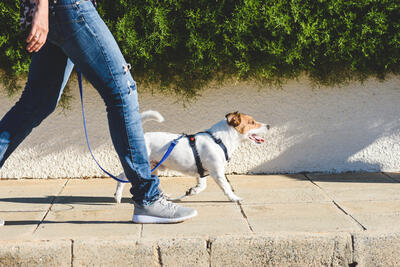
Trust me, I don't like being away from my four-legged friend; however, unless they're registered service dogs, you'll have to make arrangements for your pets at home. The only exception is Cunard's Queen Mary 2. With 24 kennels, a dedicated owner's lounge, and tons of space to play, it's the only ocean liner in the world that welcomes pets onboard.
Airlines allow furry companions on flights, with certain restrictions. Most only allow smaller animals in a carry-on, rather than larger pets checked in the cargo hold. Plus, bringing animals on a plane isn't typically free. Many airlines require passengers to pay an extra fee, except for service animals.
American Airlines, for instance, charges $150 per kennel on flights within and between the United States and Canada, Mexico, Central America, and Caribbean.
Pocket knives
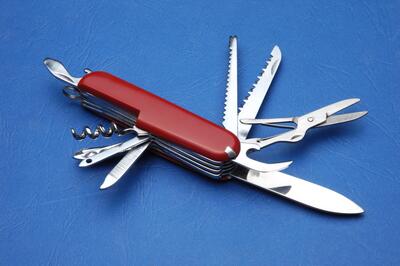
While you cannot take a pocket knife through TSA in your carry-on bag, airlines permit them to be brought on the plane only if checked. Cruise ships, however, do not let guests bring weapons onboard, including pocket knives.
Disney Cruise Line does list some exceptions, though, such as store-bought light sabers, plastic "pirate" swords, and store-bought "Mjolnir" hammers (AKA Thor's hammer). What's the point of pirate night if you cannot dress for the occasion, accessories and all?!
On a serious note, "Sharp Objects, including all knives and scissors [are not allowed]. (Note: Personal grooming items such as safety razors are allowed. Scissors with blade length less than 4 inches are allowed.)," according to Royal Caribbean.
Like steamers and irons, if security finds a pocket knife on your person (including inside your luggage), it will be taken to be returned at the end of the sailing. Mace and pepper spray are prohibited, too, as are guns, with or without a concealed carry license.
Handcuffs
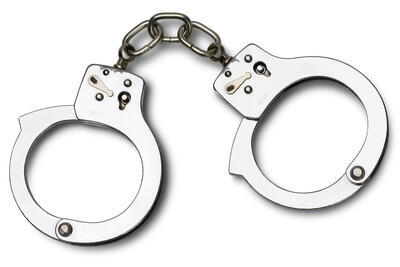
Whatever you decide to do in your free time is up to you; however, handcuffs, for whatever you may need them for, are banned from cruise ships. TSA does permit them, though.
Other restraining devices are typically banned, too. It's best to leave the leg cuffs and zip ties at home! However, there's no mention of other adult items. TSA's website also states that adult toys are allowed in carry-on and checked luggage.
Meat and seafood

While cabins are equipped with small coolers, perishable items like meat pose a health risk if not properly stored and prepared. In addition to the onboard risks, many countries have regulations regarding imported food due to concerns about spreading diseases or pests that could harm local agriculture. Though meat, seafood, and other non-liquid food items are allowed on planes in carry-on and checked bags for domestic U.S. flights, check the entry requirements for any foreign countries on your itinerary.
Truthfully, with all the available food you've paid for, smuggling meat and seafood onboard should be the least of your concerns. You won't have access to kitchens, as the ship's crew prepares all meals. From buffet breakfasts to three-course meals in the Main Dining Room, you'll enjoy a wide array of culinary delights without worrying about cleaning or cooking!
Don't try and bring meat onboard in port, either. Someone got banned from sailing with Carnival after posting a video of them fishing off their private balcony. There's no explicit policy forbidding passengers from fishing onboard, but Section 4(e) of their cruise contract states, “No Guest is permitted to bring on board the Vessel live animals (other than qualified service dogs, with not less than 14 days advance notice given to Carnival)." The fish was clearly alive when pulled from the ocean, thus violating this rule!
Electrical extension cords

Finally, while older ships lack outlets, you must leave your standard extension cords at home, including power and surge-protected strips, as they are considered a fire hazard. Instead, look into purchasing a non-surge power strip.
Moreover, many ships have European outlets, so bringing the stray European power adapter you have lying around will come in handy and allow you to take advantage of all charging options. Portable chargers are also helpful since bedside outlets aren't often available. They're useful when ashore, too, ensuring that you're never without a charged mobile device.






